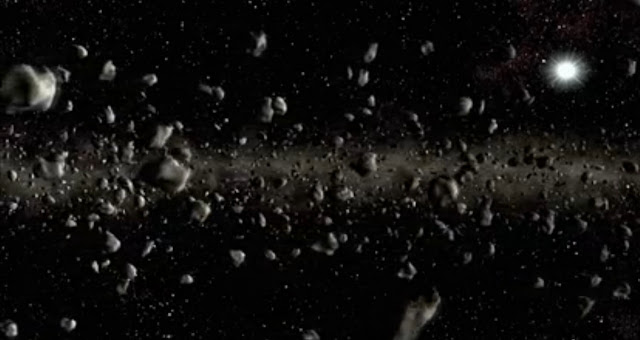Asteroid clay makes great radiation shield
by noreply@blogger.com (brian wang) from NextBigFuture.com on (#2FWXE)
Radiation from cosmic rays is one of the biggest health risks astronauts will face on long space missions, such as a proposed trip to Mars or settlement on the moon. A 2013 study suggested that a return trip to Mars would expose astronauts to a lifetime's dose in one go.
But the heavy aluminium shields currently used for short missions would be too expensive to ship. For a long-term presence on the moon or Mars, we will need to use materials found in space, says Daniel Britt at the University of Central Florida.
Mined clay from near earth asteroids could be used to affordably create radiation shields for astronauts on long missions.
Highlights
" The feasibility of using asteroidal material as a shield against radiation is studied.
" Clays are a significant component of certain asteroid types (CIs and CMs).
" Clays have better stopping power compared to lunar and generally "dry" minerals.
" Asteroidal material can have better stopping power than Aluminium.
" Benefaction and shield construction can significantly affect the stopping power.

Abstract
Galactic Cosmic Rays (GCRs) and Solar Energetic Particles (SEPs) pose a serious limit on the duration of deep space human missions. A shield composed of a bulk mass of material in which the incident particles deposit their energy is the simplest way to attenuate the radiation. The cost of bringing the sufficient mass from the Earth's surface is prohibitive. The shielding properties of asteroidal material, which is readily available in space, are investigated. Solution of Bethe's equation is implemented for incident protons and the application in composite materials and the significance of various correction terms are discussed; the density correction is implemented. The solution is benchmarked and shows good agreement with the results in literature which implement more correction terms within the energy ranges considered. The shielding properties of CI and CM asteroidal taxonomy groups and major asteroidal minerals are presented in terms of stopping force. The results show that CI and CM chondrites have better stopping properties than Aluminium.
Advances in Space Research - The radiation shielding potential of CI and CM chondrites
Read more










But the heavy aluminium shields currently used for short missions would be too expensive to ship. For a long-term presence on the moon or Mars, we will need to use materials found in space, says Daniel Britt at the University of Central Florida.
Mined clay from near earth asteroids could be used to affordably create radiation shields for astronauts on long missions.
Highlights
" The feasibility of using asteroidal material as a shield against radiation is studied.
" Clays are a significant component of certain asteroid types (CIs and CMs).
" Clays have better stopping power compared to lunar and generally "dry" minerals.
" Asteroidal material can have better stopping power than Aluminium.
" Benefaction and shield construction can significantly affect the stopping power.

Abstract
Galactic Cosmic Rays (GCRs) and Solar Energetic Particles (SEPs) pose a serious limit on the duration of deep space human missions. A shield composed of a bulk mass of material in which the incident particles deposit their energy is the simplest way to attenuate the radiation. The cost of bringing the sufficient mass from the Earth's surface is prohibitive. The shielding properties of asteroidal material, which is readily available in space, are investigated. Solution of Bethe's equation is implemented for incident protons and the application in composite materials and the significance of various correction terms are discussed; the density correction is implemented. The solution is benchmarked and shows good agreement with the results in literature which implement more correction terms within the energy ranges considered. The shielding properties of CI and CM asteroidal taxonomy groups and major asteroidal minerals are presented in terms of stopping force. The results show that CI and CM chondrites have better stopping properties than Aluminium.
Advances in Space Research - The radiation shielding potential of CI and CM chondrites
Read more